The Art and Science of Indigo
The indigo plant produces an exquisite dye that was so highly prized it was called “blue gold.” One of the few naturally occurring blue pigments, indigo has a variety of artistic and scientific applications.
In the summer and fall of 2021, my colleagues J. D. Talasek, Kimberly Suda, and I organized Intersections 2021 with the support of the Getty Foundation. The project featured online convenings and a series of Zoom salons to connect scientists with curators, artists, scholars, and others involved in developing PST ART: Art & Science Collide exhibitions. Now that the exhibitions have come to fruition at more than 70 museums and cultural institutions across Southern California, I want to share a story about one of the exhibitions and how Intersections 2021 enriched it.
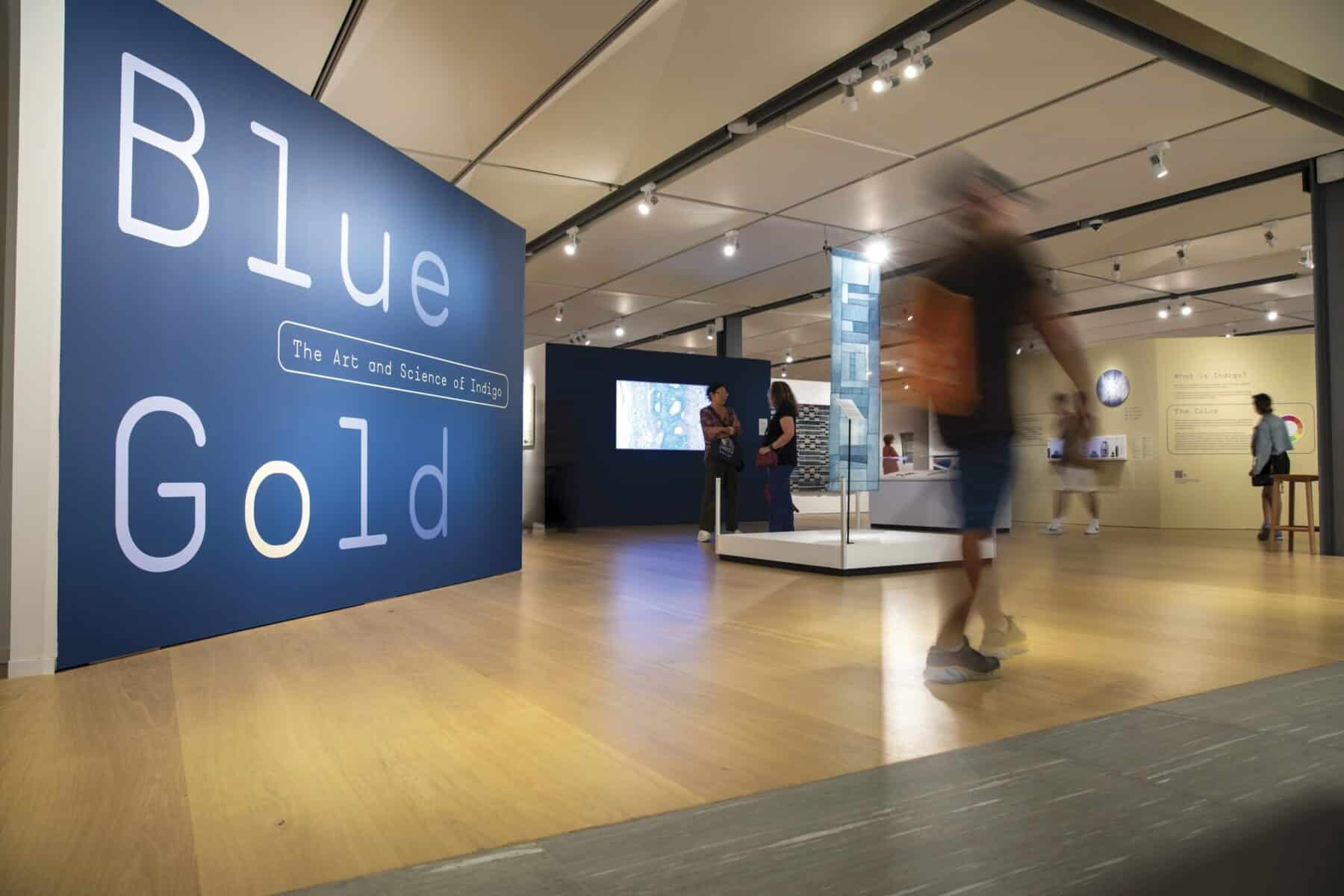
During the online convenings, developmental biologist Ben Dubansky and artist-biologist Brandon Ballengée connected with Barbara Hanson Forsyth, guest cocurator of Blue Gold: The Art and Science of Indigo. This Art & Science Collide exhibition, then in development with San Diego’s Mingei International Museum curatorial team, Emily G. Hanna and Guusje Sanders, explores indigo’s complex past and present through craft, science, and history.
Indigo is a term that can refer to a color, dyestuff (the material used for dyeing), and a plant (there are more than 750 species worldwide). For thousands of years, indigo plants were cultivated to produce a spectrum of exquisite blue dyes. This precious dye is one of the few naturally occurring blue pigments and was so highly prized that it was called “blue gold.” The labor-intensive dyeing process involves extracting dye from plant leaves, fermenting the extract, and then applying it to fabric or other materials. Indigo remains widely used, although synthetic indigo largely replaced natural indigo in the late 1800s.
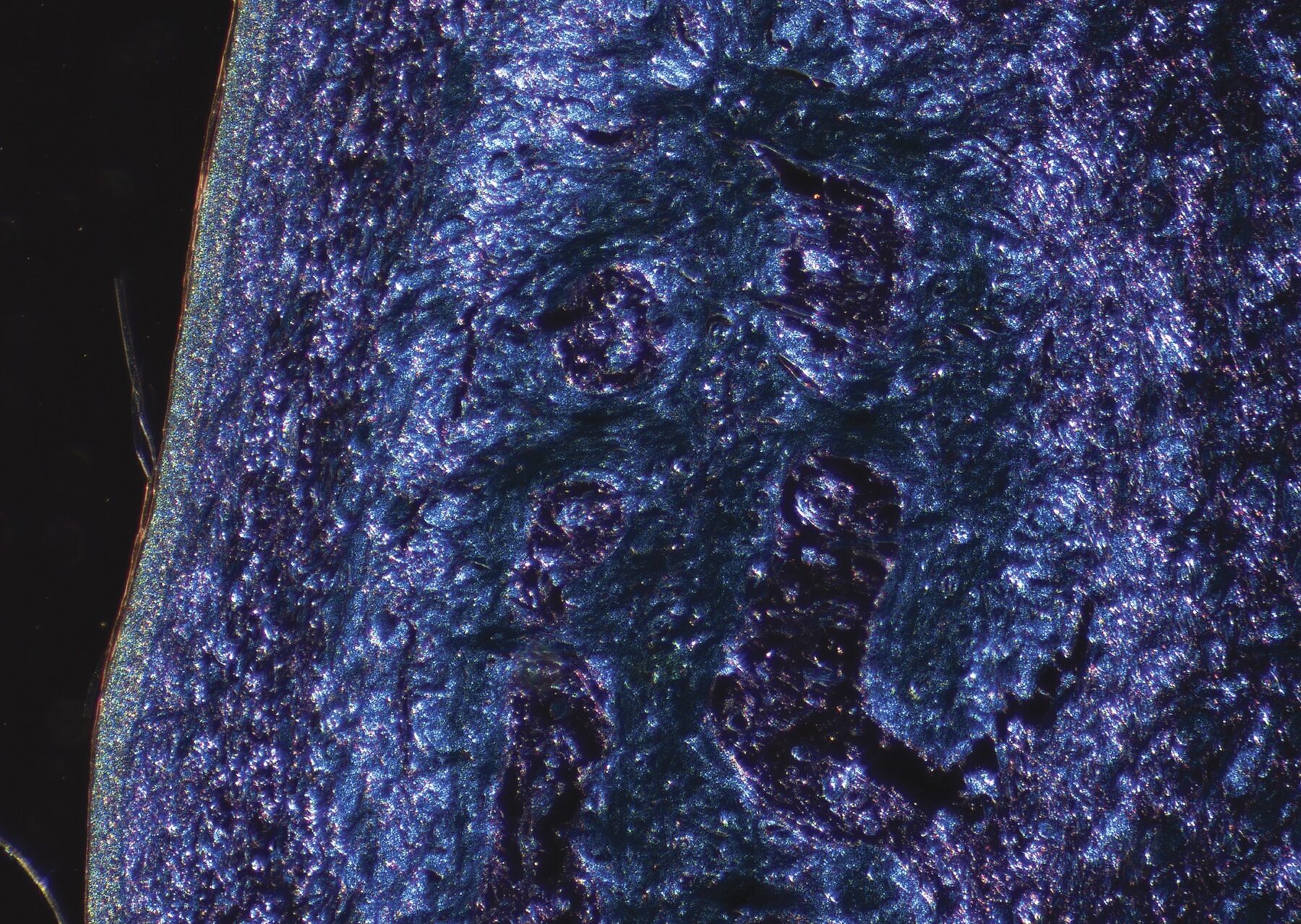
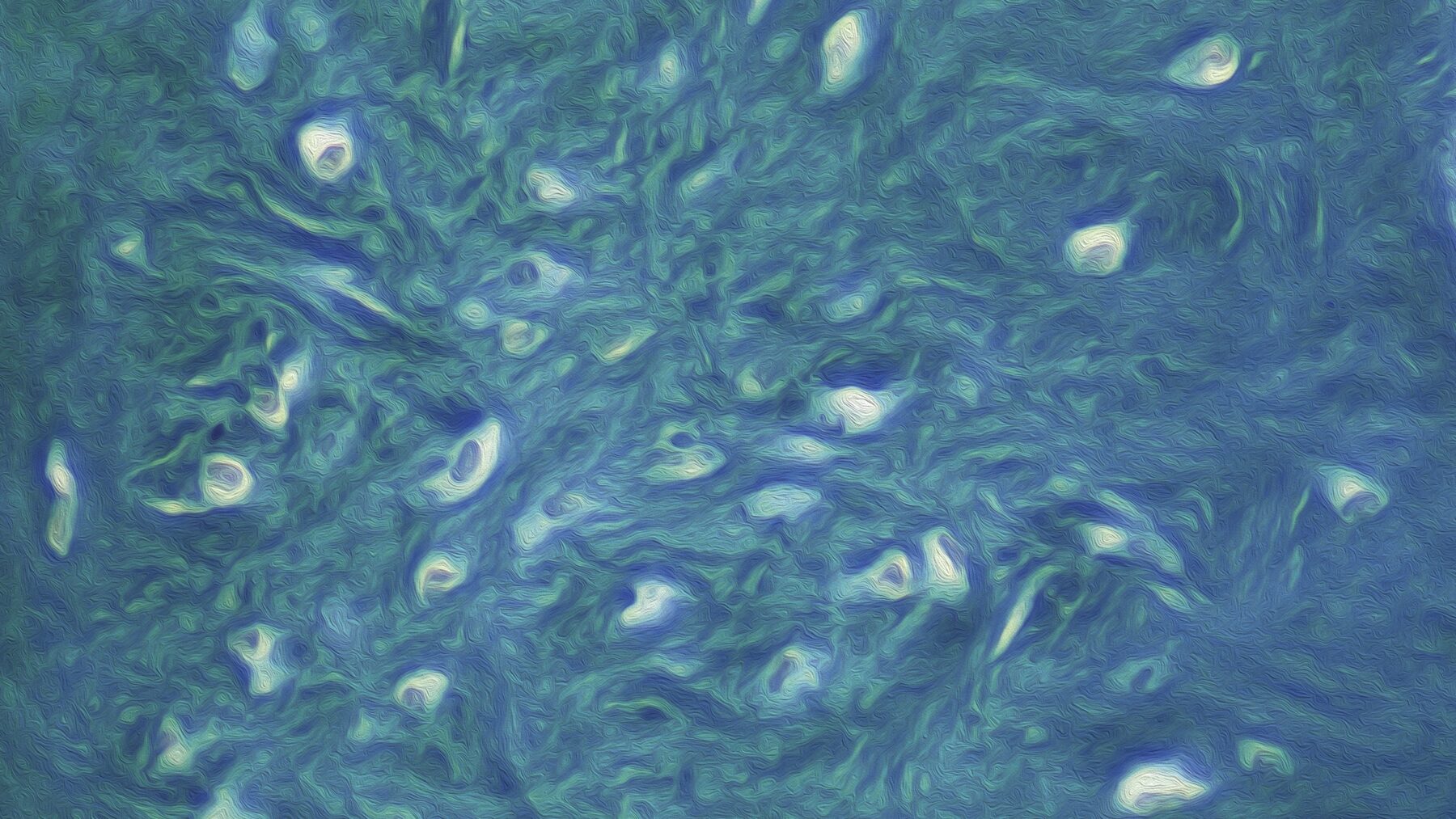
From their conversations with Forsyth, Ballengée and Dubansky initiated Le Bleu Perdu (The Lost Blue), a multifaceted research project and cultural collaboration at Atelier de la Nature in Arnaudville, Louisiana. Atelier de la Nature is a twenty-five-acre environmental education center founded and run by Ballengée and his wife, Aurore Ballengée. The goal of Le Bleu Perdu is to reclaim the lost art and science of indigo cultivation in Louisiana. A collaborative group consisting of tribal members, university researchers, and community members is involved in this ongoing project. They cultivate the indigo plant, extract the dyestuff, and conduct numerous experiments and projects. Two projects initiated as part of Le Bleu Perdu were featured in Blue Gold.
In the first project, Dubansky and his wife, anatomist Brooke Dubansky, knew that the first use of indigo in modern science was for microscopy, to stain cell structures to make them visible under a microscope. Spanish neuroscientist Santiago Ramón y Cajal (1852–1934) was among the early scientists to use a form of plant-based indigo called picroindigocarmine—in which picric acid adds yellow to blend with deep blues and greens in connective tissues—in tissue-staining processes. This method of staining was reported to be beautiful and to have excellent diagnostic value, but it became outdated before the invention of color photography, so no visual record of it exists. The Dubanskys were curious to find out what it looks like.

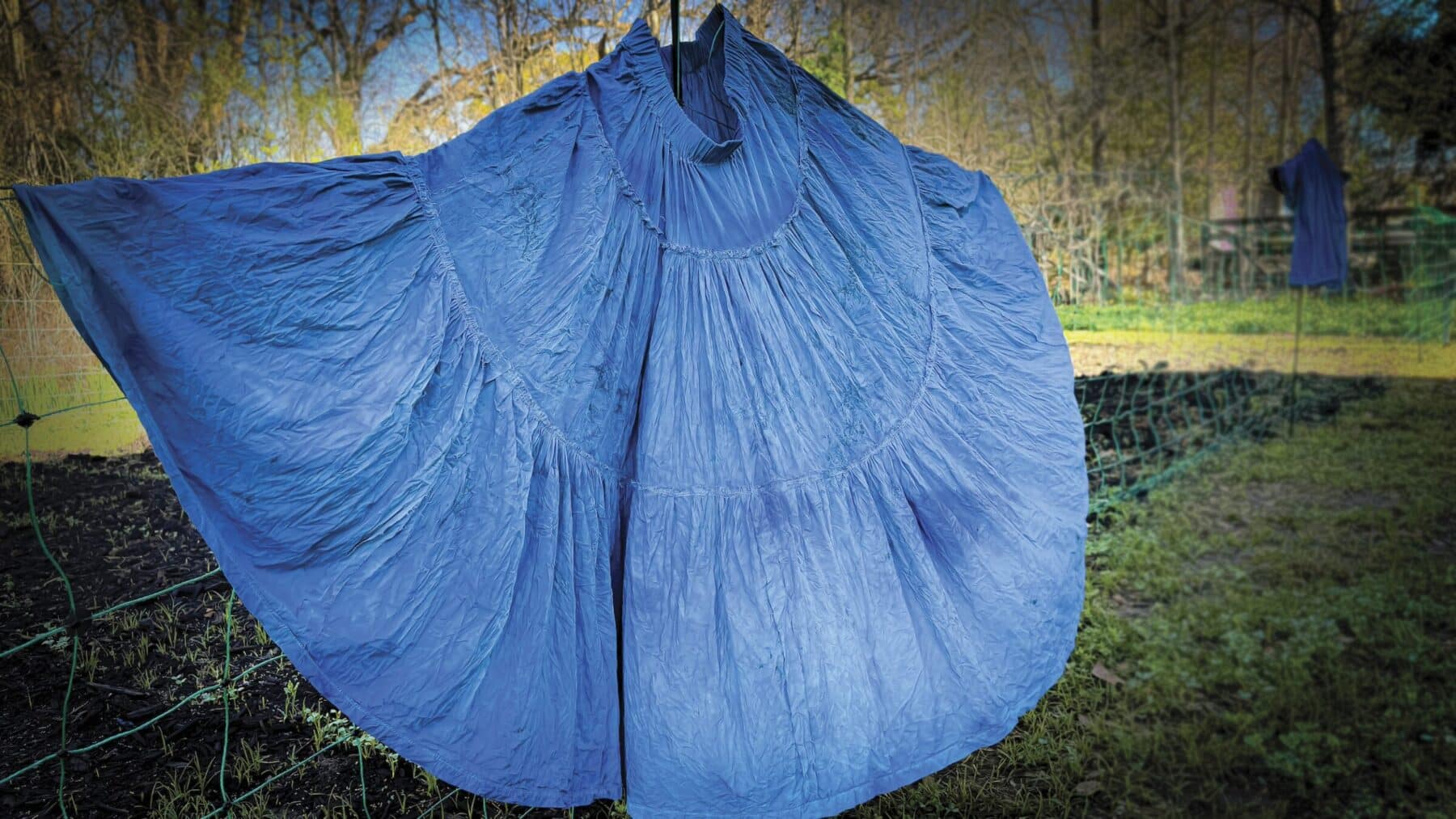
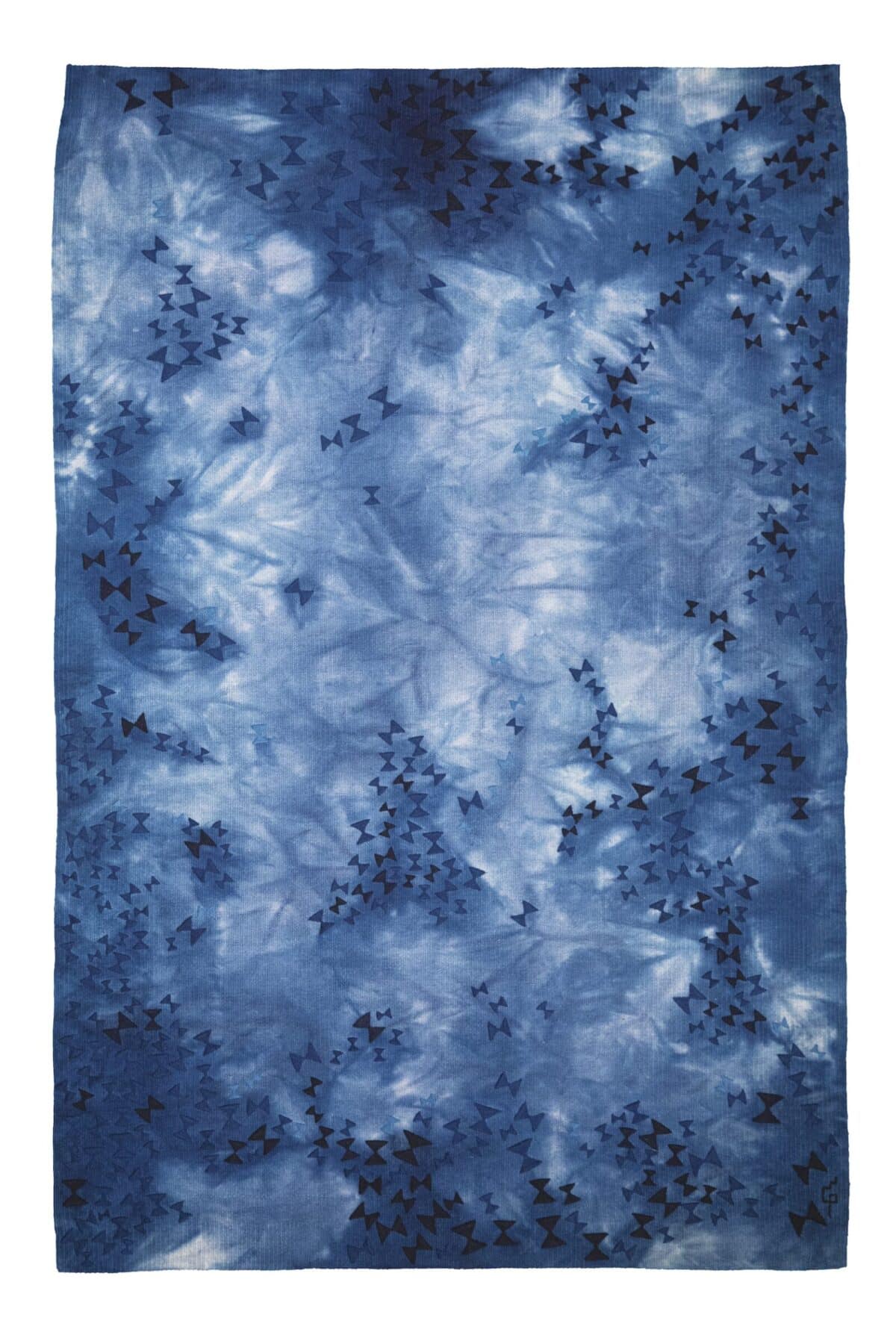
They began experimenting with a modified form of picroindigocarmine to stain archived slides of histological tissue. After some trial and error, they achieved aesthetically pleasing results. This microscopy history added an often-overlooked dimension to the story of indigo and is an intriguing example of the intersection of biology and textile chemistry, which Forsyth was excited to include in the exhibition. When Ben Dubansky initially joined Intersections 2021, he envisioned his role as a science advisor, maximizing the scientific content in the Art & Science Collide exhibitions. He never imagined his work would be featured in a show.
In the second project from Le Bleu Perdu, LouAnn Moses, an artisan and culture bearer in the Coco Tribe of Canneci Tinne of Louisiana, created a traditional, indigo-dyed Camp Dress that was presented in the Blue Gold exhibition. Moses states, “Camp Dresses are worn at gatherings, and they are traditional dresses. I learned about the dyeing of the dress with indigo and how beautiful the color is that we have lost for generations and is now returning.” She continues to embrace this revitalized practice, noting the unique beauty it brings to traditional garments. The harmful toxins released during synthetic indigo production pose significant risks to both workers and the environment. This issue, alongside a growing appreciation for ancestral knowledge, has fueled a resurgence of traditional dyeing practices.
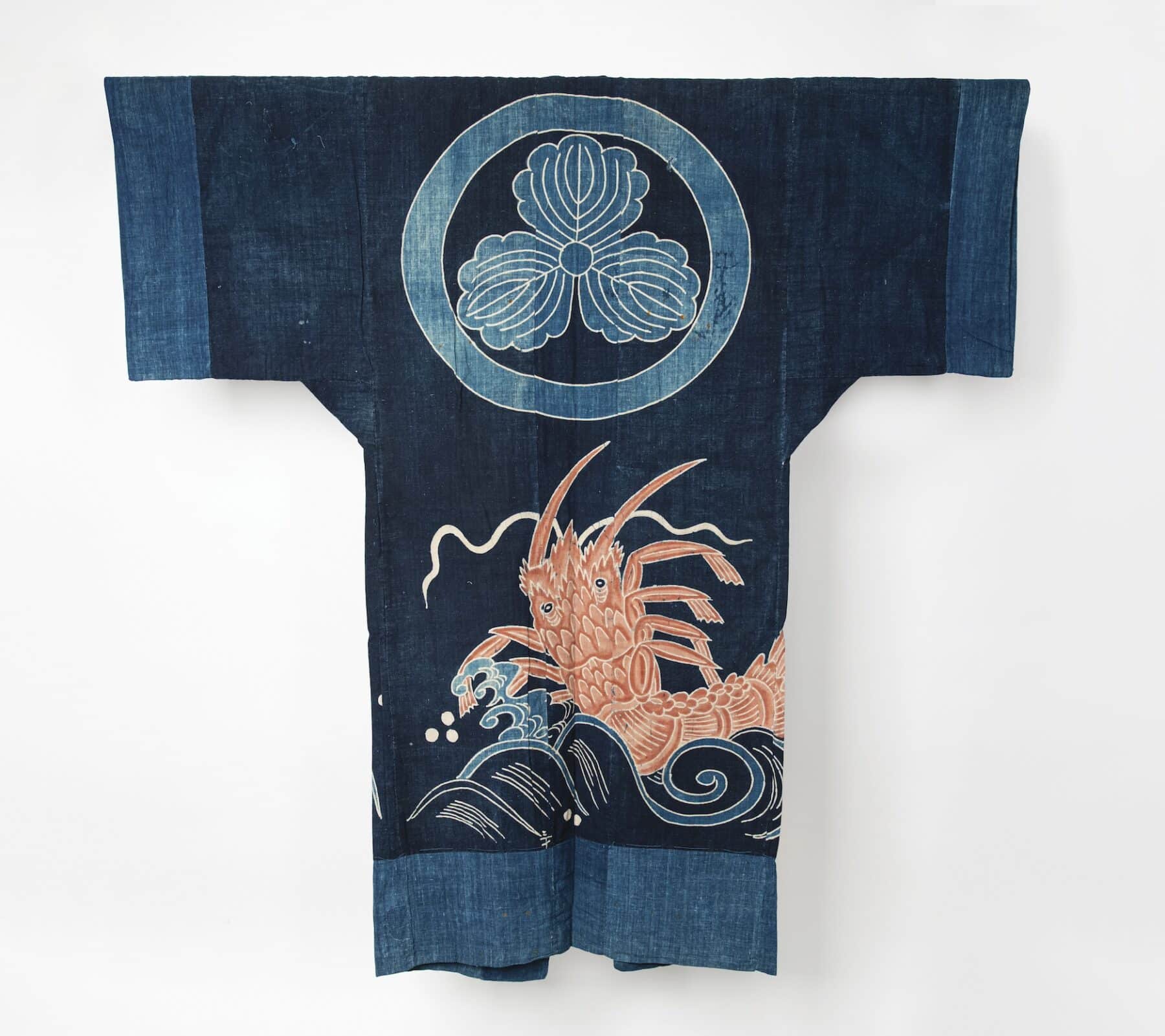
Unidentified artist, Sleeping Garment (Yogi), c. 1830–1900, Japan. Hand spun, hand woven cotton plainweave; two-tone indigo dye over painted tsutsugaki resist paste reserves; two-tone reds are probably safflower and/or cinnabar pigment; entirely hand sewn; replaced indigo cotton plainweave lining, 61 x 55 1/2 inches. Collection Mingei International Museum, gift of Barb Rich, 2016-125-010. Photograph by Ron Kerner.
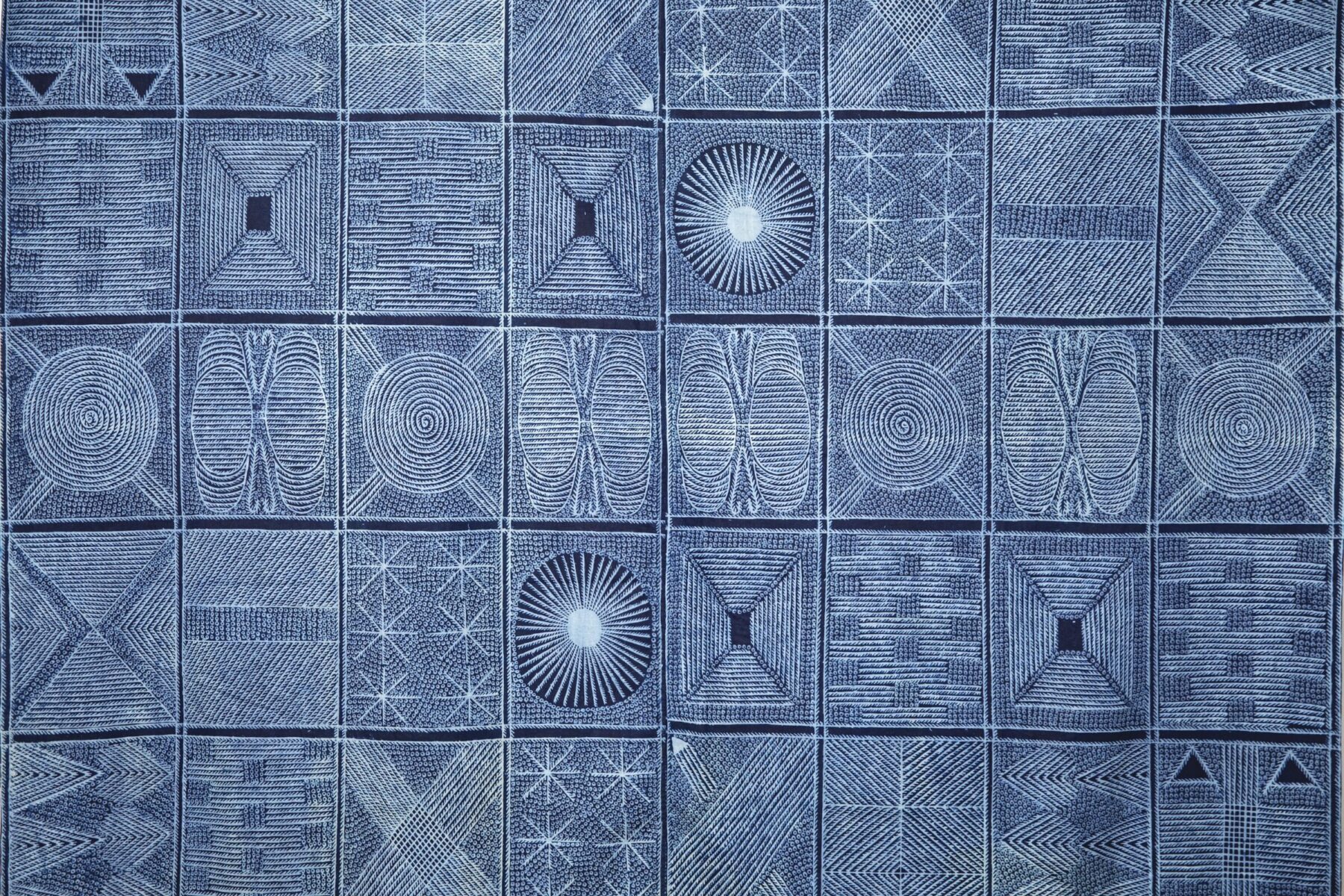
Blue Gold: The Art and Science of Indigo ran from September 14, 2024, through March 16, 2025, at Mingei International Museum in San Diego, California. Part of Getty’s PST ART: Art & Science Collide initiative, the exhibition presented the story of indigo through more than 180 objects representing 30 countries.
